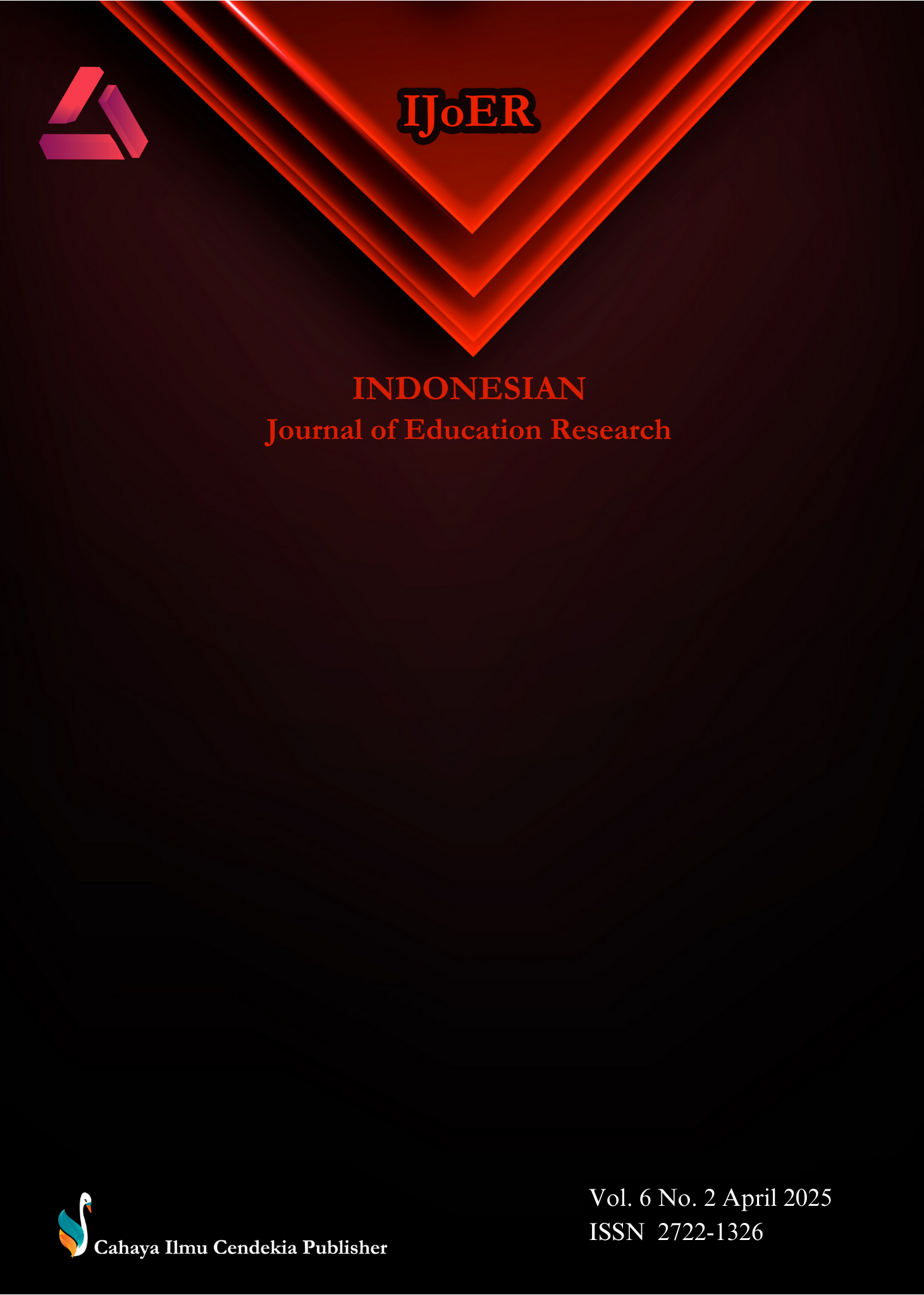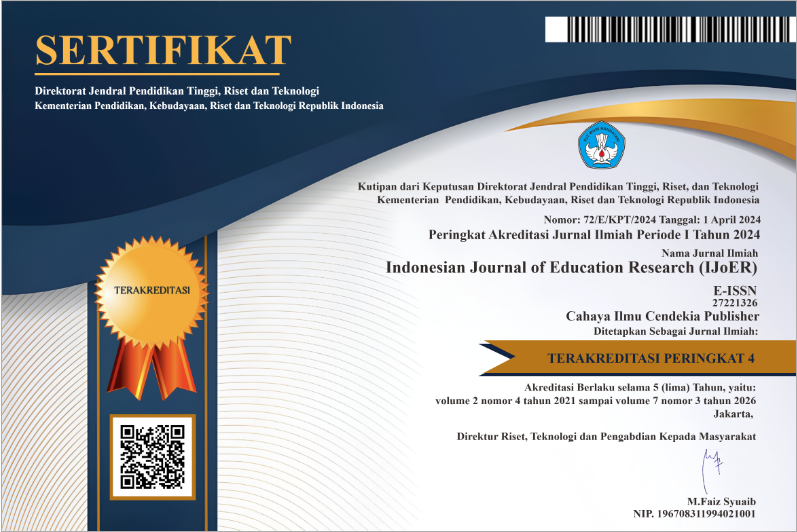Exploring the Relationship Between Learner Autonomy and Learner Engagement Among EFL Students in Cambodian Universities
Abstract
Purpose of the study: The main aims of this study are to: 1) find out how Cambodian EFL university students perceive learner autonomy and engagement; and 2) find out how these two factors correlate to one another.
Methodology: This research adopted a quantitative methods employing cluster sampling for data collection via a bilingual questionnaire in English and Khmer. The data was processed and analyzed using SPSS (Version 23), utilizing both descriptive and inferential statistics, including correlation coefficients, to extract insights from the survey findings.
Main Findings: The main findings of this study were: 1) Cambodian EFL university students showed high levels of learner autonomy and engagement, indicating the need for interventions to develop autonomy and create supportive learning environments; and 2) a moderate positive correlation was found between learner autonomy and engagement.
Novelty/Originality of this study: The unique aspect of this research is how it identifies the complex correlation between learner autonomy and engagement among EFL university students in Cambodia. High levels of motivation and autonomy were seen, but there were also clear difficulties with self-perceived competence. This comprehensive perspective enhances the existing literature by emphasizing the impact of contextual elements on autonomy and engagement, therefore addressing a gap in current research. Furthermore, the results underline the significance of creating supportive learning environments and the requirement for tailored interventions. These insights have practical implications for educational policy and pedagogical approaches, indicating that educators have to adopt techniques that foster autonomy and offer tailored support to improve learner engagement and optimize resource use.
References
A. T. Birhan, “Autonomy, agency, and identity in teaching and learning English as a foreign language, by (Mark) Feng Teng,” Education as Change, vol. 23, pp. 1-4, June 2019. doi: 10.25159/1947-9417/6273
K. Sothy, S. Madhur, and R. Chhem, “Cambodia education 2015: employment and empowerment,” S. M. a. R. C. K. Sothy, Ed., Phnom Penh, 2015.
A. Pramanik, “A study on examining autonomy provision in higher education,” 1-7, vol. 5, nº 3, pp. 1-7, May 2023. https://jngr5.com/public/blog/Enhancing%20User%20Experience.pdf
O. Vlasyuk and T. Daragan, “The procedure of admission to higher education institutions as one of the main factors of academic autonomy,” Problems of Education, vol. 1, nº 98, pp. 23-37, 2023. doi: https://doi.org/10.52256/2710-3986.1-98.2023.02
A. Danilenko; I. Kosmidis; V. Shershneva; and Y. Vainshtein, “Learner autonomy in modern higher education,” SHS Web of Conferences, vol. 48, pp. 1-7, August 2018. doi: 10.1051/shsconf/20184801002
M. F. Teng, “Learner identity and learners' investment in EFL learning: a multiple case study,” Iranian Journal of Language Teaching Research, vol. 1, nº 7, pp. 43-60, 2019. doi: 10.30466/ijltr.2019.120632
J. A. Fredricks, Eight myths of student disengagement: Creating classrooms of deep learning, Corwin Press, 2014.
D. Ginting, “Student engagement and factors affecting active learning in English language teaching,” Voices of English Language Education Society, vol. 5, nº 2, p. 215–228, October 2021. doi: 10.29408/veles.v5i2.3968
S. H. Moore, “A case study of assessment in English medium instruction in Cambodia,” em English Medium Instruction in Higher Education in Asia-Pacific, vol. 21, Cham, Springer, 2017, pp. 173-191.doi: 10.1007/978-3-319-51976-0_10
R. Smith, K. Kuchah, and M. Lamb, “Learner autonomy in developing countries,” em Autonomy in Language Learning and Teaching, London, Palgrave Pivot,, 2018, pp. 7-27. doi: 10.1057/978-1-137-52998-5_2
P. Benson, Teaching and researching autonomy in language learning, 2nd ed., Routledge, 2011. doi: 10.4324/9781315833767
W. Littlewood, “Defining and developing autonomy in East Asian contexts,” Applied Linguistics, vol. 20, nº 1, pp. 71-94, 1999. doi: 10.1093/applin/20.1.71
N. Zepke, and L. Leach,, “Improving student engagement: Ten proposals for action,” Active Learning in Higher Education, vol. 11, nº 3, pp. 167-177, 2010. doi: 10.1177/1469787410379680
G. Humphreys, and M. Wyatt, , “Helping Vietnamese university learners to become more autonomous,” ELT Journal, vol. 68, nº 1, pp. 52-63, 2014. doi: 10.1093/elt/cct056
A. Khamkhien, “Teaching English speaking and speaking-test in the Thai Context: A reflection from Thai perspective,” English Language Teaching Journal, vol. 3, nº 1, pp. 184-190, 2010. doi: 10.5539/elt.v3n1p184
S. Sun, “The effects of learner autonomy on academic performance among Cambodian EFL university students,” International Journal of Scientific and Research Publications (IJSRP), vol. 13, nº 6, pp. 184-198, 2023. doi: 10.29322/IJSRP.13.06.2023.p13827
M. Kinsella, J. Wyatt, N. Nestor, J. Last, and S. Rackard,, “(2023). Fostering students’ autonomy within higher education: the relational roots of student adviser supports,” Irish Educational Studies, p. 1–20. doi: 10.1080/03323315.2023.2201229
M. O. Johansen, S. Eliassen, & L. M. Jeno, “The bright and dark side of autonomy: How autonomy support and thwarting relate to student motivation and academic functioning,” Frontiers in Education, vol. 8, pp. 1-13, 2023. doi: 10.3389/feduc.2023.1153647
S. Sun, “Examining Cambodian EFL university learners’ perceived autonomy, engagement, and performance,” Journal of General Education and Humanities, vol. 4, nº 2, p. 323–336, 2025. doi: 10.58421/gehu.v4i2.396
T. A. Nguyen, T. H. Nguyen, M. H. Nguyen, T. T. Phạm, T. T. Le, Y. H. Phuong, and T. T. A. Huynh, “Empowering Vietnamese EFL learners at tertiary level: Investigating factors shaping learner autonomy in English language acquisition,” Journal for Language and Foreign Language Learning, vol. 11, nº 2, pp. 125-138, 2022. doi: 10.21580/vjv12i116406
K. Khulaifiyah, M. Anugerahwati, and U. Widiati, “Autonomous learning among EFL undergraduate students in selected private Indonesian Islamic University: Voices and activities,” Journal of Research and Innovation in Language, pp. 232-242, August 2022.
M. S. Gocić and A. Janković , “Investigating learner autonomy of EFL and ESP students at the tertiary level: cross-sectional study,” Journal of Teaching English for Specific and Academic Purposes, vol. 9, nº 4, pp. 601-610, 2021. doi: 10.22190/JTESAP210460
U. Dilnoza, K. Dilshoda, and T. Muzaffar, “Learner autonomy in language teaching and learning,” International Journal of Research, vol. 6, nº 13, pp. 493-498, 2019. https://journals.pen2print.org/index.php/ijr/article/view/19597
E. Kuluşaklı, “EFL learners’ language learning effort and autonomy in online distance education in higher education,” Journal of Faculty of Education, vol. 23, nº 1, pp. 51-66, 2023.
T. Q. Tran, “EFL students' attitudes towards learner autonomy in English vocabulary learning,” English Language Teaching Educational Journal, vol. 3, nº 2, pp. 86-94, 2020. doi: 10.12928/eltej.v3i2.2361
J. L. Núñez and J. León, “Determinants of classroom engagement: A prospective test based on self-determination theory,” Teachers and Teaching, pp. 147-159, 2018. doi: 10.1080/13540602.2018.1542297
J. Reeve, “How students create motivationally supportive learning environments for themselves: The concept of agentic engagement,” Journal of Educational Psychology, vol. 105, nº 3, p. 579–595, 2013. doi: 10.1037/a0032690
R. Okada, “Effects of perceived autonomy support on academic achievement and motivation among higher education students: A meta-analysis,” Japanese Psychological Research, vol. 65, nº 3, p. 230–242, 2023. doi: 10.1111/jpr.12380
W. Q. Oga-Baldwin and Y. Nakata, “Engagement, gender, and motivation: A predictive model for Japanese young language learners,” System, vol. 65, pp. 151-163, April 2017. doi: 10.1016/j.system.2017.01.011
A. M. Svalberg, “Engagement with language: Interrogating a construct,” Language Awareness, vol. 18, nº 3-4, pp. 242-258, 2009. doi: 10.1080/09658410903197264
L. Taylor and J. Parsons, “Improving student engagement,” Current Issues in Education, vol. 14, nº 1, pp. 1-33, 2011. https://cie.asu.edu/ojs/index.php/cieatasu/article/view/745
Y. Nie and S. Lau, “Complementary roles of care and behavioral control in classroom management: the self-determination theory perspective,” Contemporary Educational Psychology, vol. 34, nº 3, pp. 185-194, 2009. doi: 10.1016/j.cedpsych.2009.03.001
H. Jang, J. Reeve, and E. L. Deci, “Engaging students in learning activities: It is not autonomy support or structure but autonomy support and structure,” Journal of Educational Psychology, vol. 102, nº 3, p. 588–600, 2010.
S. N. S. Gandhimathi and A. Devi, “Learner autonomy and motivation-a literature review,” Research on Humanities and Social Sciences, vol. 6, nº 3, pp. 80-83, 2016. https://iiste.org/Journals/index.php/RHSS/article/view/28934/29697
S, Borg and S. Al-Busaidi , “Learner autonomy: English language teachers’ beliefs and practices,” ELT Journal, vol. 12, nº 7, pp. 1-45, 2012. https://www.teachingenglish.org.uk/sites/teacheng/files/b459%20ELTRP%20Report%20Busaidi_final.pdf
E. Namaziandost, F. Çakmak, T. Heydarnejad, and A. Rezai, “The predictive effects of learner autonomy and academic engagement on willingness to communicate, foreign language learning self-esteem, and L2 grit in an EFL context,” Acta Psychologica, vol. 250, pp. 1-14, 2024. doi: 10.1016/j.actpsy.2024.104528
G. Şakrak-Ekin, and C. Balcikanli, “Does autonomy really matter in language learning. 5(4), .,” Journal of Language and Education, vol. 5, nº 4, p. 98–111, December 2019. doi: 10.17323/JLE.2019.8762
Y. H. Phuong, and P. Q. Vo, “Students’ learning autonomy, involvement and motivation towards their English proficiency,” Journal of English Education, Literature and Culture, vol. 4, nº 1, pp. 1-12, 2019. doi: 10.30659/E.4.1.1-12
E. L. Deci and R. M. Ryan, “Self-determination theory: a macro theory of human motivation, development, and health,” Canadian Psychology/Psychologie Canadienne, vol. 49, nº 3, pp. 182-185, 2008. doi: 10.1037/a0012801
M. Csikszentmihalyi and R. Larson, Flow and the foundations of positive psychology, vol. 10, Dordrecht: Springer, 2014. doi: 10.1007/978-94-017-9088-8
J. W. Creswel, Research design: Qualitative, quantitative, and mixed methods approaches, 4th ed., London: Sage Publications, Inc., 2013.
G. D. Israel, Determining sample size, Unversity of Florida, 1992.
M. M. Johnston, and S. J. Finney, , “Measuring basic needs satisfaction: Evaluating previous research and conducting new psychometric evaluations of the Basic Needs Satisfaction in General Scale,” Contemporary Educational Psychology, vol. 35, nº 4, pp. 280-296, 2010. doi: 10.1016/j.cedpsych.2010.04.003
C. J. Wang, W. C. Liu, Y. H. Kee, and L. K. Chian, “Competence, autonomy, and relatedness in the classroom: understanding students’ motivational processes using the self-determination theory,” Heliyon, vol. 5, nº 7, pp. 1-6, 2019. doi: 10.1016/j.heliyon.2019.e01983
A. Bandura, “Guide for constructing self-efficacy scales,” Self-Efficacy Beliefs of Adolescents,, vol. 5, nº 1, pp. 307-337, 2006.
J. L. Webb-Williams, Self-efficacy in the primary classroom: An investigation into the relationship with performance, 2007.
Copyright (c) 2025 Somara Sun

This work is licensed under a Creative Commons Attribution 4.0 International License.
Authors who publish with this journal agree to the following terms:
- Authors retain copyright and acknowledge that the Indonesian Journal of Education Research (IJoER) is the first publisher licensed under a Creative Commons Attribution 4.0 International License.
- Authors are able to enter into separate, additional contractual arrangements for the non-exclusive distribution of the journal's published version of the work (e.g., post it to an institutional repository or publish it in a book), with an acknowledgment of its initial publication in this journal.
- Authors are permitted and encouraged to post their work online (e.g., in institutional repositories or on their website) prior to and during the submission process, as it can lead to productive exchanges and earlier and greater citation of published work.







.png)
.png)




















